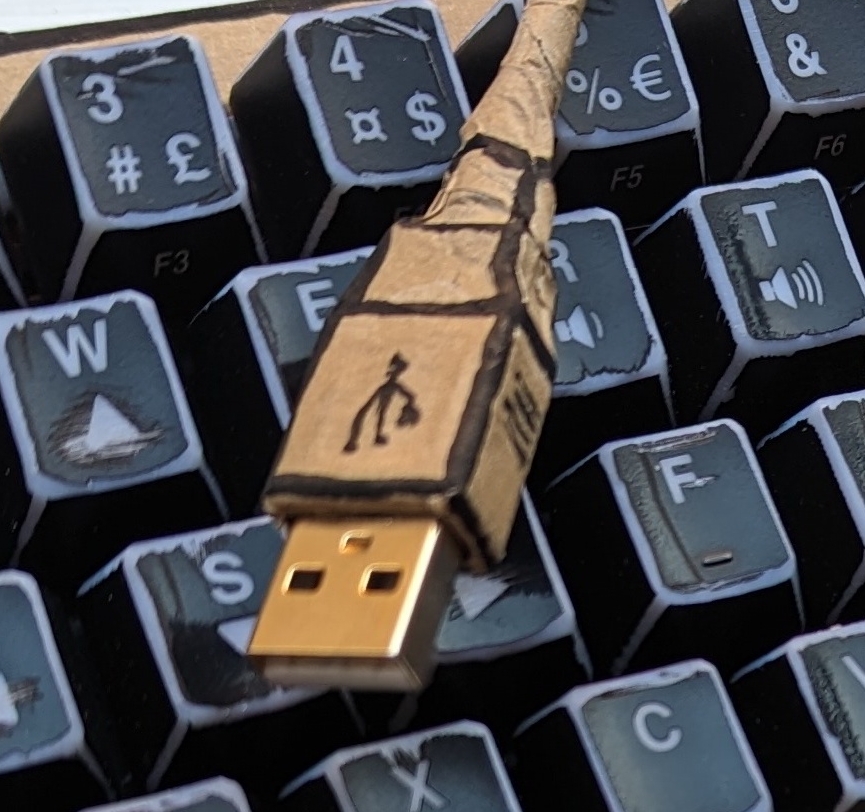Wuuttup. I’m here complaining again about Framework’s Linux unfriendly display. The new one this time.
https://frame.work/products/display-kit?v=FRANJF0001
Old display, 2256 x 1504 (3:2)
GNOME
100% scale
- Nothing looks blurry
- Everything is tiny
- Unusable
100% scale + large text accessibility
- Nothing looks blurry
- Most apps scale appropriately
- Some apps don’t respect GNOME’s large text setting (Alacritty)
125% scale
- Most apps look blurry (Picard, Firefox, Spotify, Alacritty)
200% scale
- Everything is way too big
- Unusable
Plasma
100% scale
- Nothing looks blurry
- Everything is tiny
- Unusable
125% scale + Apply scaling themselves
- Nothing looks blurry
- Most apps scale appropriate
- Some apps can’t scale themselves and look tiny (Picard)
125% scale + Scaled by system
- Most apps look blurry (Picard, Firefox, Spotify, Alacritty)
200% scale
- Everything is way too big
- Unusable
New display, 2880 x 1920 (3:2)
GNOME
100% scale
- Nothing looks blurry
- Everything is tiny
- Unusable
100% scale + large text accessibility
- Nothing looks blurry
- Most apps scale appropriately
- Some apps don’t respect GNOME’s large text setting (Alacritty)
- Everything is tiny
150% scale
- Most apps look blurry (Picard, Firefox, Spotify, Alacritty)
200% scale
- Everything is way too big
- Unusable
Plasma
100% scale
- Nothing looks blurry
- Everything is tiny
- Unusable
150% scale + Apply scaling themselves
- Nothing looks blurry
- Some apps can’t scale themselves, but look a little better here? (Picard)
150% scale + Scaled by system
- Most apps look blurry (Picard, Firefox, Spotify, Alacritty)
200% scale
- Everything is way too big
- Unusable
tl;dr
In the old display, GNOME at 100% + large text was the best compromise. In the new display, Plasma at 150% + Apply scaling themselves is the best compromise.
Interestingly, Picard scaling itself looks super tiny in the old display, but in the new display it looks… better. It’s still not correctly scaled like native Wayland apps, but it’s better.
Warning
If you can’t stomach moving from GNOME to Plasma, then 🚨 DO NOT BUY THE NEW DISPLAY 🚨. The new display is worse for GNOME.
Once again
I am once again begging Framework to just give us a damn regular DPI display that works! Without workarounds. Without forcing users on specific DEs. Without forcing users to stop using their favorite apps. This new display has basically all of the flaws as the previous one.
Would you be happier with 640x480?
If it meant I could actually see my apps because they’re not blurry and not tiny. Then hell yeah! Luckily, it’s not a choice between all the DPI and none of the DPI.
- Dell XPS 13 - 1920X1200
- Lemur Pro - 1920x1200
- Thinkpad X11 - 1920 x 1200
It’s possible.
Seriously, cannot go back. When MacBooks came out with retina, got one and got a program to run at native resolution. So much data and text on a screen! Looking forward to this display with 100% scale. Full stop. Everyone always says my text looks tiny but I love it! Dual 4k monitors, no scaling on my desktop Linux. My old Alienware laptop was 4k oled, gnome and KDE looked fan frickin tastic! I’m not buying pixels to not have em go to full use.
“I paid for the entire display so i’ll use the entire display”
Hell yeah. Wonder if you have like 20/10 vision or something that helps you with the size. I love love the look of native 4K but it strains my eyes and brain to read 😥
Actually I have really REALLY bad vision, but my glasses bring me to around 20/20. Maybe as I get older I’ll start scaling up. Or just buy bigger sized monitors!
96 DPI should be a choice, agreed. But it’s a software issue when an app or a framework doesn’t display well on HIDPI.
Agreed! Not saying it’s not a software issue. Of course the software is broken. Of course I wish it was updated.
But, Framework seeing the landscape and picking hardware with known issues is a bad choice. They could offer lower DPI and eliminate entire pages of workarounds and half fixes.
Yes, high DPI should work, but it doesn’t everywhere. That’s just the reality, I wish it wasn’t.
Hardware should lead. It’s easier to upgrade the software to make the hardware work, then it is to upgrade the hardware when the software decides to support it.
Is it that bad? I run gnome on two 4k monitors with 100% scaling and large text and it’s great
GNOME sucks, both in their community engagement culture, and actual look. I’ve never liked their culture, but they used to have a superior desktop IMO.
I like GNOME. I make it look good and provide a great workflow.
Huh, I actually run Plasma at 100% with my FW13 2256x1504. I didn’t know there was a new display, but if I had it, 100% wouldn’t cut it anymore. Frankly, for such a small display, I wouldn’t desire a higher resolution than what I have in the FW13, even if all the software scaled properly.
I installed one of these new displays this past weekend and it looks fantastic in Linux. Granted I’ve only tried Plasma so far on Wayland but that’s because I really don’t find Gnome usable. It looks good at 200% though and a similar scale to 150% on the old display.
How are you feeling about the Framework otherwise?
It’s all right otherwise. Not phenomenal, but not crap. The specs you can get with other laptops. The hardware feel isn’t as good as a Dell XPS or an X1 Carbon. The expansion card stuff is kinda cool, but other laptops have ports too. I’ve never swapped out the cards.
The main reason I bought this laptop is repairability. If that’s not your main priority, then I probably wouldn’t recommend this laptop.
If you want to use this laptop with Linux and not spend time fixing hardware compatibility issues, then I definitely would not recommend this laptop. Definitely get a Dell XPS for a Linux laptop that Just Works.
Appreciate you taking the time, thanks.
I agree with pretty much everything they’ve said, though I’ve gotten more use out of the swappable parts. I have a desktop I use for things I need a powerful system for, but being able to swap in the GPU when traveling is great.
When I’m at home I have basically everything on USB C and the empty expansion bay.
When I travel I swap in the GPU and add an HDMI port and some USB a ports.
If you don’t have stuff set up like I do I agree it’s mostly just a reparability / upgradeability thing.
Framework would be an instant buy for me if not the 3:2 screen. I’m not a developer, so there’s no upside for me
I just want the repairability
After spending a few months on the FW16, going back to a 16:9 laptop feels… wrong. Like there’s a ton of vertical space missing. Everything except watching movies benefits from a little bit more vertical space.
If you want to use this laptop with Linux and not spend time fixing hardware compatibility issues, then I definitely would not recommend this laptop. Definitely get a Dell XPS for a Linux laptop that Just Works.
Have you tried the
-frameworkimages from uBlue?This has not been my experience with my FW16. I also have an XPS for work, and had a Gigabyte Aero before that, but I would hands down take the the FW16 over the XPS 9510. While the XPS doesn’t have any major issues running Linux (though I am unhappy with the trackpad), I haven’t had any issues running Linux on the FW16 either, and I absolutely love having whatever ports I want available. I really missed the great port selection I had on the Aero, which made the XPS painful for me to use (I am so sick of dongles). I use my FW16 for a bunch of different requirements and have a ton of ports for it: ( 4x Ethernet, 3x USB-A, 3x USB-C, 2x HDMI, 2x DP, 2x MicroSD, 2x 3.5mm). Being able to reconfigure on the fly for whatever my workflow is for the day has been great.
Also, something that really galls me about working on the XPS series vs. the Latitude series, is that even though the XPS is supposed to be the premium line, the Latitudes are much nicer to work on. For example, Latitudes have captive screws on the back cover whereas the XPSes don’t, and they also have razor sharp un-polished edges on the covers (always great to have to clean the blood off your motherboard traces before you can power it back on. )
As for the display issues, I can’t speak to that because I use Hyprland and don’t have a DE, but don’t see any issues.
XFCE
I am once again begging Framework to just give us a damn regular DPI display that works!
Bottom Skinner is right, though. It’s 2024. HiDPI has to be supported by all toolkits, desktops, and applications at this point. There are no excuses. Even 1080p on a 14" laptop screen warrants 125% scaling, IMO.
Scaling for HiDPI displays is unacceptable on every desktop OS, it is crazy that so little effort has been put into making the experience of modern monitors good.
I feel this is one of those few sectors, like wifi compatibility, where Windows completely destroys Linux, MacOS, and BSD. As someone who regularly switches between operating systems on bare metal & 4K, trying to use a HiDPI display on *nix is painful and will only kinda work with caveats after 100 hacks (as seen here), whereas Windows has a zoom slider that just works.
Interesting, as someone running 4k, p1440, and a 1600x1200 three monitor setup, this makes me nervous about switching.
I never even considered Linux having scaling issues in 24’
macOS seems to handle this pretty well, honestly. About the only issue I have is XQuartz and even it’s pretty good.
What’s the issue you’re seeing?
Scaling, MacOS has no actual scaling it will only lower the resolution, and using Retina on anything that isn’t sold in an Apple store (and even then) just simply does not work. It essentially has no HiDPI support past using native resolution with slightly larger text that is not adhered to by most of the operating system itself. I am at a loss at why you think this is well handled, what criteria are you using?
What the hell are you talking about? You are completely wrong on this. macOS has had high DPI support since 2012, when the first Retina display Macbook Pro came out. Applications bundle 1x and 2x sized assets, and fractional scaling is achieved by shrinking the 2x upscale back down to match the selected fractional scale.
I’m surprised to be learning this, but I’ve never tried to use a non-Apple HiDPI display with my Macs. Weird that it works so well on the HiDPI built-in displays and their external displays, but won’t bother to make it work right with non-Apple displays.
Am I crazy or are you just completely wrong?
https://github.com/waydabber/BetterDisplay/wiki/MacOS-scaling,-HiDPI,-LoDPI-explanation
I’ve had most stuff look good with Plasma 6. But not perfect.
I’ve found that it’s mostly ok at some settings but less so at others. As in it will display well at 125% but not necessarily at 135%.
deleted by creator
HiDPI has to be supported by all toolkits, desktops, and applications at this point. There are no excuses.
I mean… yeah, I agree. Would you mind sending that email to the millions of devs around the world? Not sure if they’re aware of this.
I just want to be able to read my screen. 😭
Would you mind sending that email to the millions of devs around the world?
Yes, I mind. For Qt5 applications, basic HiDPI support can be patched in with a single line. I actually did that for a handful of applications, tested them, and then submitted pull requests on Github. I cannot program, so all I could do is to copy and paste that one line from the Qt documentation. It’s not much but I already did my part.
“This hardware works fine and even has compatible software that it works great with. But I’m going to prefer the broken software for other reasons. And that means it’s the hardware’s fault.”
Software that is built to be compatible with a wide variety of hardware should be compatible with a wide variety of hardware.
If software can’t handle a 16.5:16 aspect ratio, then that’s bad software. I don’t care how weird of a niche thing that is… just make your software abstract enough to handle those cases.
It’s 2024, any resolution/aspect ratio/DPI combo should be supportable. There’s enough variety of monitors out there that we should have a solution for handling things on the fly without needing to have a predefined solution.
🤣on 14” 1080 i would need 50% scaling to make it usable for me, since I can not work with such a tiny space for my apps… You can’t even use two apps side by side on 1080 these days, since everything is designed for higher DPI.
And even on 100% is the font so blurry that it is hard to read. Got do I hate 1080p 🤣🤣
Everything I use needs high DPI like 2k to 3k on 14” - 16”, everything bigger needs at least 4k
I get needing more space for certain workflows but if fonts are blurry on 1080p at 100% there’s something wrong with your setup. Misconfigured font renderer or so. Configure your FreeType to set font smoothing to sharp and hinting to slight. If your distribution has other defaults, file a bug report with them. Back in the day when screens had a lower pixel density (I had 15" 720p once), FreeType might have been configured “smoother” because it would match print output closer.
I have no Linux on any 1080 screen… There were a test laptop With 1080p in my office (windows) and we still have some 1200p screen in use (I avoid them)
The Font is definitely why better readable on 4k, even at half the size compared to 1080p
Meme is right, in 2024 poor HiDPI scaling is a software issue
You should try 110% and 130%. Dunno if it’s the 5’s but those seem to work better for me.
scaled by system/themselves … looks like those are x11 apps. why is firefox into this? run it as native wayland with
MOZ_ENABLE_WAYLANDNot necessary anymore with current version Firefox. It has Wayland enabled by default now.
Sexy
Honestly I might be dumb, but I don’t understand why I can’t scale any app individually to custom fractions. Why don’t DEs add this as a feature?
sober (RoL support) has scaling issues for me too
Try changing display resolution instead of scaling. Scaling was always a hack.
Scaling is the future, too low set resolution was always the hack…
No, the problem is, built-in displays have too high resolution for their usecase (because vendors can demand more cash for it). Things don’t get less sharp if you scale that (via resolution) to comfortale size, your angular resolution doesn’t get better just with that. You don’t lose pixels you can’t see.
The hack is the solution that sometimes works and sometimes not, which is the case with software scaling.And your “future” is at least five years ago.
edit: “too low set resolution”, what are you talking about? It’s too high originally, heating your notebook and lowering battery live for nothing.
🤣🤣WTF are you talking
Setting scale down makes everything looks shit! Are you blind?! The pixels are fucking gigantic if you do this. I go through up if I have to use lowDPI screens, evry usecase demands at least 2k or better 3kfor me (at 14”). Speaking desktop 32” 4k it is.
Usecase matters for pixel density. You have the phone close to your face, 400 dpi are just enough here. Notebook, more far away, is about 300 dpi ideal. Desktop, about 200 dpi. This is why a TV, usually 3m+ away, has about 65" in 4k. But if you sit 1m before your TV, you see big pixels.
Now, for notebook, usual size of 13" to 17", resolution between 1280x and 2560x is good. You see no pixels, no battery draining and fan noise, and no issues with some tool not/weird scaling.
Ah you know what, please read here.
1280 is nearly “2k” being typically 1440, and yea that’s “good” but I still see some pixel framing, to be "great” it need to be at least more than 2500 for me









